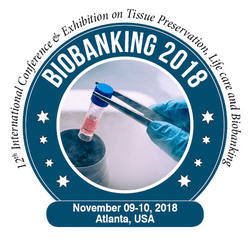
Yoo-Hun Suh
Gachon University, South Korea
Title: Potential stem cell therapy for Alzheimer’s disease and Parkinson’s disease
Biography
Biography: Yoo-Hun Suh
Abstract
Alzheimer’s disease (AD) is characterized by the accumulation of amyloid plaques and neurofibrillary tangles accompanied by cognitive dysfunction. We examined whether intracerebrally or intravenously transplanted human adipose-derived stem cells (hASCs) could have therapeutic or preventive effects in AD/PD mice model. We demonstrated that intracerebral or intravenous injection of hASCs rescued memory deficit and gave benefits of blocking the pathogenesis in the brain of AD Tg mice by reducing the number of plaques and neuropathology. Among stem cells, autologous human adipose-derived stem cells (hASCs) elicit no immune rejection responses, tumorigenesis, or ethical problems. We found that intravenously transplanted hASCs passed through the BBB and migrated into the brain. The e-learning, memory, and pathology in an AD mouse model (Tg2576) mice greatly improved for at least 4 months after intravenous injection of hASC. Th e number of amyloid plaques and Aβ and APP-CTs levels decreased signifi cantly in the brains of hASC-injected Tg mice compared to those of the Tg-sham mice. Intravenously or intracerebrally transplanted hASCs significantly rescued memory defi cit and neuropathology in the brains of Tg mice by upregulating IL-10 and VEGF and be a possible use for the prevention and treatment of AD. We are currently conducting clinical phase I & II study of hASCs for an AD in the USA. Here, we demonstrated that transplantation of neural stem cells into 12-month-old Tg2576 brains markedly improved both cognitive impairment and neuropathological features by reducing β-amyloid, secretion of anti-inflammatory cytokines, endogenous neurogenesis, as well as synapse formation. In contrast, the stem cell transplantation did not cover cognitive dysfunction and β-amyloid neuropathology in Tg2576 mice aged 15 months when the memory loss is manifest. However, the optimal stage of the disease for stem cell transplantation to have a therapeutic effect has yet to be determined. Overall this study underscores that stem cell therapy at an optimal time frame is crucial to obtain maximal therapeutic effects that can restore functional deficits or stop the progression of the AD. The treatment of Parkinson’s disease (PD) using stem cells has long been the focus of many researchers, but the ideal therapeutic strategy has not yet been developed. The hASC were intravenously injected into the tail vein of a PD mouse model induced by 6-hydroxydopamine. The behavioral performances were significantly improved at 3 weeks after the injection of hASC. Additionally, dopaminergic neurons were rescued, the number of structure-modified mitochondria was decreased, and mitochondrial complex I activity was restored in the brains of the hASC-injected PD mouse model. Overall, this study strongly indicated that intravenously transplanted hASC may have therapeutic potential for PD by recovering mitochondrial functions.

